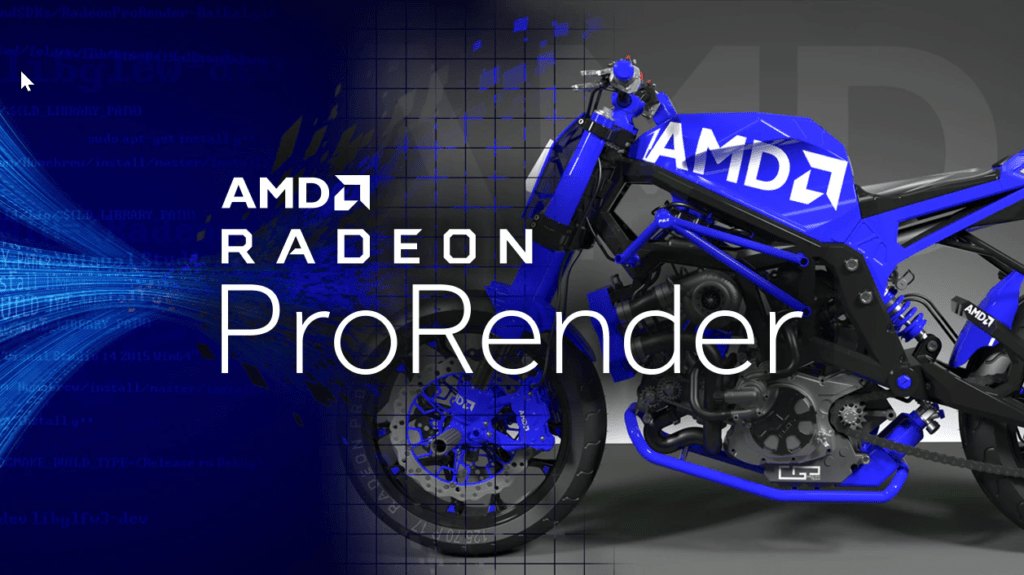AMD made a splash at SIGGRAPH this week with their Radeon ProRender offering. What was interesting was the product is hardware agnostic in that it will work with any GPU or any CPU, so it is potentially a somewhat agnostic “raise all boats” offering. And since it works on Windows, MacOS, and Linux it really attempts to raise all boats.
It is also a component, which means a number of offerings for simulation, gaming, and content creation can use the related plug-in to increase the realism of their offerings.
Let’s talk about AMD’s strategy and what it will mean for the future of content creation this week.
AMD Making the Unreal Real
I couldn’t resist this title because one of the platforms that this offering enhances is the Unreal Engine which is mostly used for gaming but often used for simulation as well. The goal for graphics vendors in general is to constantly pump their technology so that the image quality of the rendered applications you use continues to improve.
This constant cycle of improvement assures there is a ready market for new graphics cards and processors that will better make use of improvements in the rendering technology. And the plug ins make the products they enhance more attractive and valuable which is how AMD was able to get several third-party CEOs, and product managers to endorse the announcement at SIGGRAPH.
Key features in this offering include filter library enhancements, AI-accelerated denoising, documentation updates, enhanced performance, improved time to first pixel, and vertex color mapping. On the roadmap are deformation motion blur, full spectrum rendering, cloud rendering, Thin Film Shader, and Light baking. All of these will only add to the efficiency of the product and the enhanced realism of what it creates.
Interesting Related Announcements
Around 12 software vendors announced they would be using this new AMD plug in, but few stood out.
ECCA EDIFICIUS is an architectural rendering platform which allows an architect or designer to create a photorealistic image of what they are designing. As someone that went a little over budget (6X) on a project because he didn’t render the plan before starting, I now really appreciate this class of tool. As with many current generation tools this one will do real time rendering so an architect or designer can better visualize what it is, they are designing. This is also one of the first products in its class where they have implemented VR (virtual reality) compatibility. VR allows a customer or user to walk through the project virtually before a builder is engaged so all those expensive change orders can be done virtually and cheaply.
InstaLOD Studio XL This is a Computer Aided Design (CAD) product and, also like many products in its class, it now supports full 3D processing so your creation can take physical form if you have access to a 3D Printer. Based on the demos, it appears to have use cases ranging from rendering physical objects like cars to virtual scenes in games. The lighting effects that can be added so you can see reflections and textures was particularly impressive.
Z-Emotion targets the fashion industry and, as such, appears to be focused on rendering clothing. It has some interesting features like the ability to render layers of clothing realistically, the ability to place the clothing on virtual Mannequins, and produce a virtual catwalk. You can produce your own virtual fashion show without making anything. I’ve always wanted to design my own clothing; this solution appears to take me a lot closer to that goal.
Distributed Cloud Rendering from A.L.I. Technologies this is an interesting joint project between the companies. This is a blockchain-based cloud service for high performance secure rendering jobs. This seems to represent the future of rendering which tends to be very compute intensive under a SaaS (Software as a Service) model to provide performance when and where you need it.
Blender 2.80 is a new version of the popular Blender application with AI-accelerated denoising, adaptive sampling, and hair rendering. This means this version of Blender should be particularly good with rendering people. This is a next generation product that hasn’t entered beta yet.
Wrapping Up
At SIGGRAPH, AMD came to play with an interesting plug-in that should significantly improve rendering performance regardless of the hardware and operating system you are using. Built in or added to some amazing graphics productivity products, the offering should be well received by those that want to transform their imaginations into fully rendered virtual realities their customers, family, and friends can enjoy. The ability to transform a vision into a something that can be seen and appreciated by others is helping drive the evolution of virtual reality in all its forms.
- The HP OmniBook X Flip 2-in-1 16-Inch: Your New Digital Swiss Army Knife (Now in Glorious Atmospheric Blue) - June 25, 2025
- The Open AI Avalanche: Why AMD’s Collaborative Spirit Is Outmaneuvering NVIDIA’s Empire - June 22, 2025
- Lenovo Embraces OpenBMC: A Step Towards Greater Transparency and Control in the Data Center - June 17, 2025




Comments are closed.